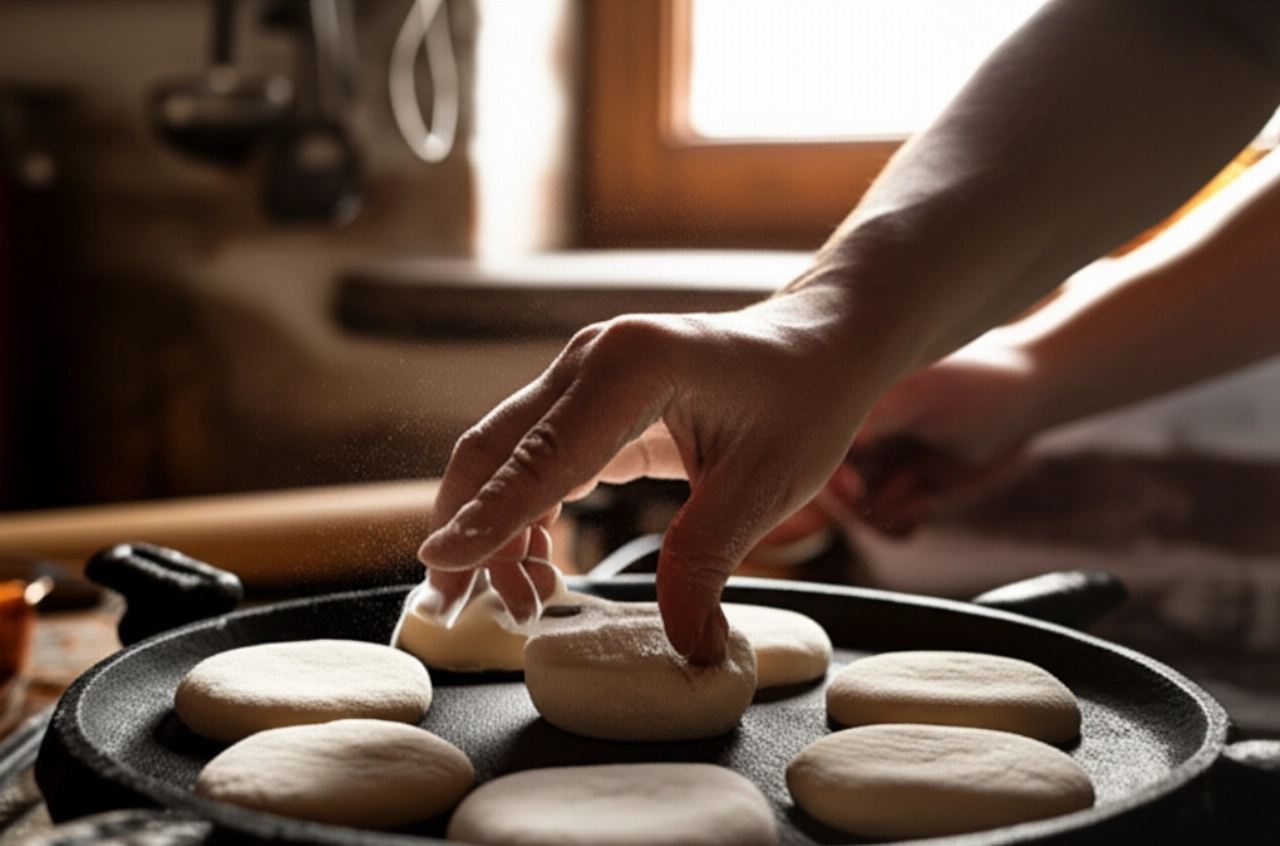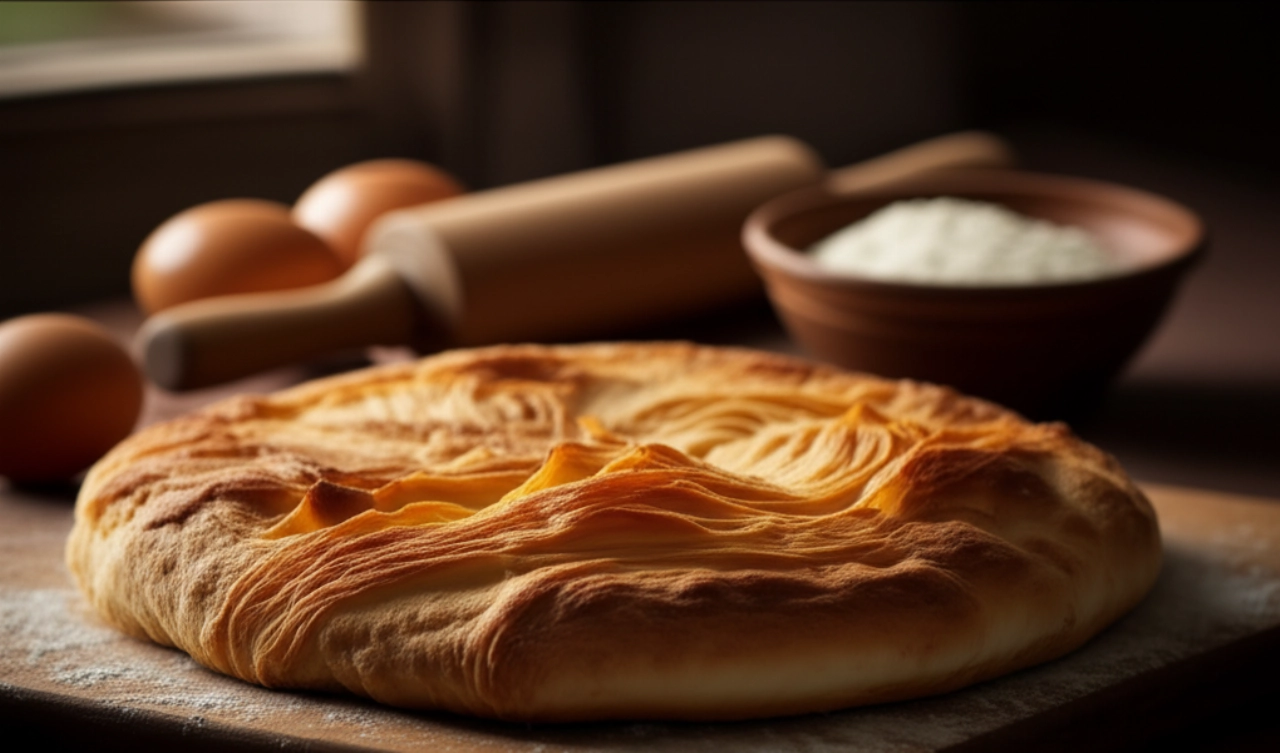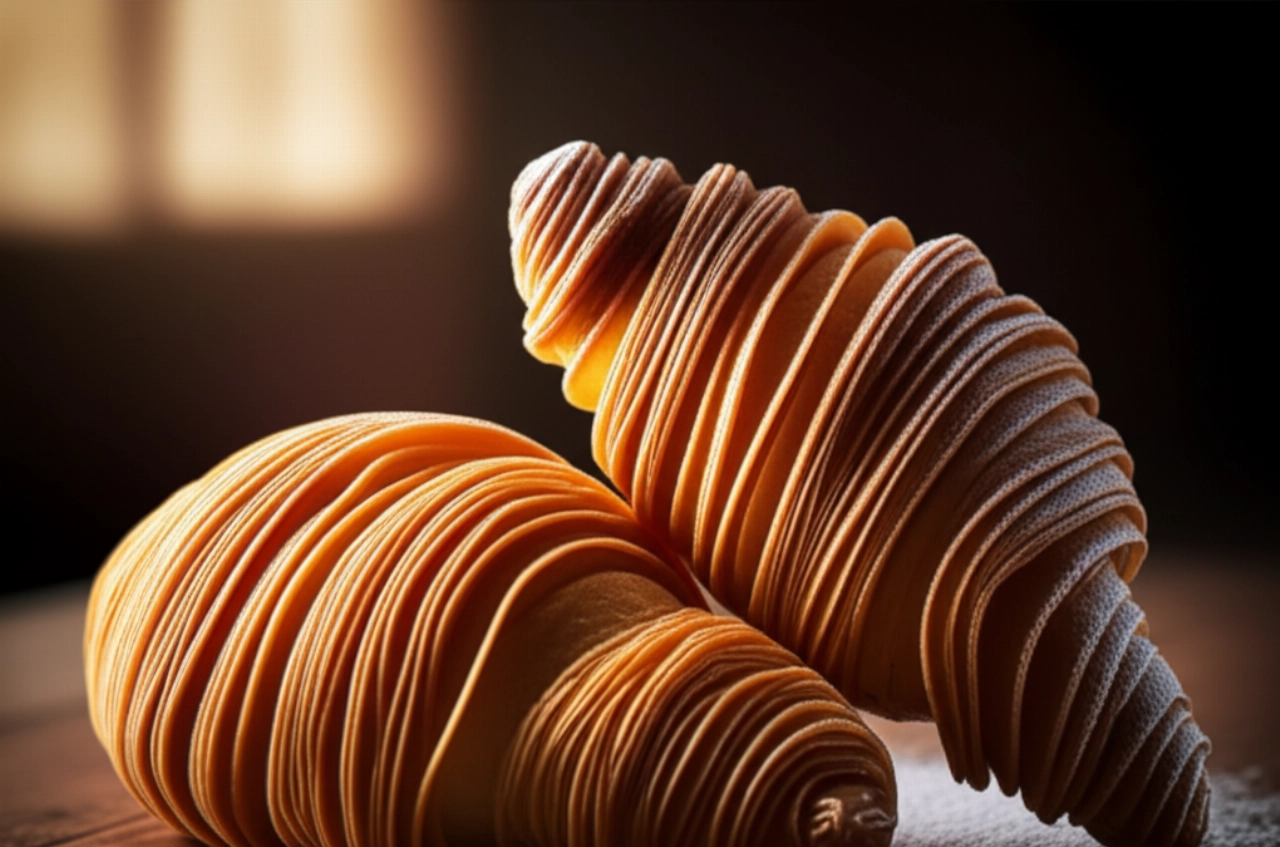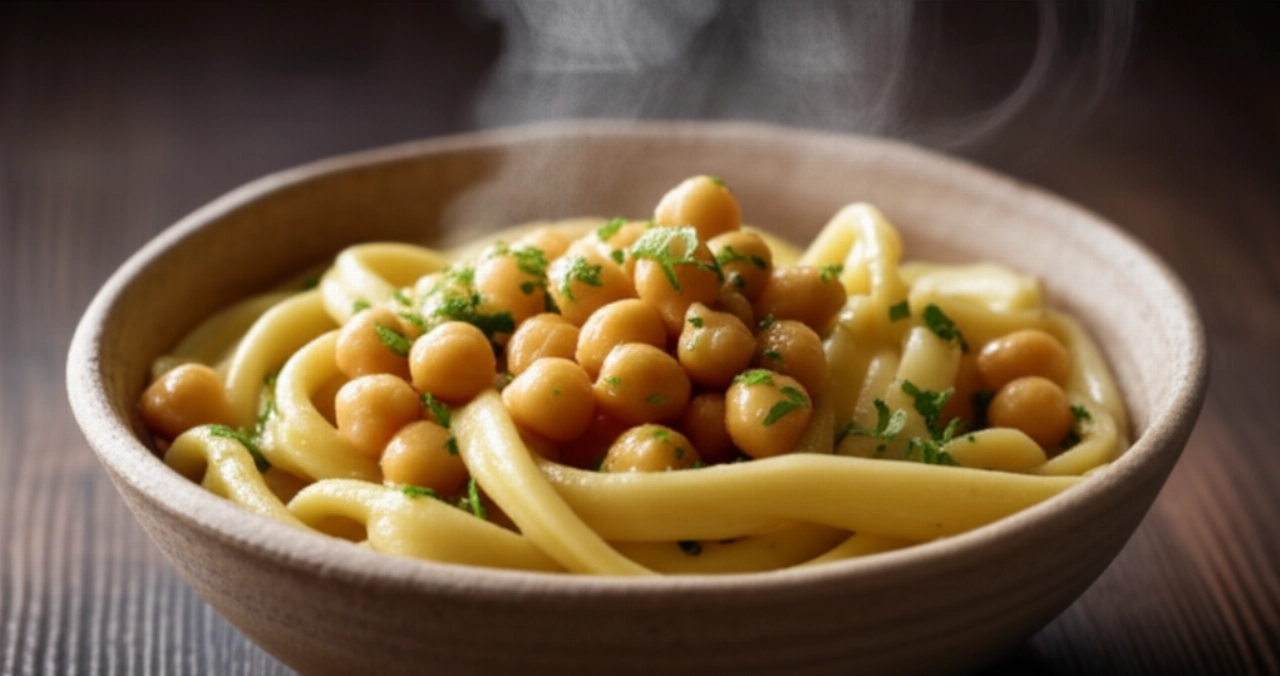Dreaming of bringing those delicious, fragrant, and soft Modenese Tigelle to your table, tasting of Emilia's festive tradition? Imagine the aroma filling your kitchen, the joy of seeing your guests or family savor every bite, filling these little wonders with cured meats, cheeses, or the traditional cunza (Modenese pesto).
Perhaps you've tried other recipes, but the result wasn't what you hoped for: gummy tigelle, too hard, or not rising properly. Finding the true recipe, the one that gives you certainty of success, the one that makes you say "finally!", can seem like a challenge. The fear of wasting precious ingredients and the apprehension of not being up to the task can deter even the most passionate cook.
Get comfortable, because today I'm revealing all the secrets to prepare the best and most foolproof Tigelle (or Crescentine, as they're called in some areas of Emilia-Romagna) you've ever tasted. Not just a list of ingredients, but a true step-by-step guide, full of tips and practical advice, guaranteeing you a result worthy of applause. Here, success is assured!

Ingredients for Perfect Tigelle: The Choice That Makes the Difference
Every ingredient has a precise role, and knowing it will help you understand the reason behind each choice. It's not just a list, it's the foundation of your success!
- All-purpose flour (or Type 0 flour): We'll use 500 g. All-purpose flour is ideal for tigelle because it has the right strength to develop an elastic dough and a soft crumb. If you prefer, you can use Type 0 flour, which will make them slightly more rustic but equally good.
- Fresh brewer's yeast: 12 g. Fresh yeast is the heart of the leavening process. It will give you a more controlled dough and a richer flavor compared to dry yeast. If you only have dry yeast, use about 4 g (one-third the weight of fresh).
- Lukewarm water: About 250-280 ml. "Lukewarm" is the keyword! Not hot (it would kill the yeast) and not cold (it would make it sluggish). It should be at a temperature that feels pleasant on your skin, like a baby's bathwater.
- Lard: 30 g. Here's the true secret to the softness and authentic flavor of Modenese tigelle! Lard makes the dough incredibly soft and light. Don't worry, its flavor isn't overpowering, but it gives that unique fragrance. If you really can't find it or don't want to use it, you can substitute it with 20 ml of delicate extra virgin olive oil or 30 g of soft butter, but be aware that the result won't be the same in terms of authenticity and melt-in-your-mouth texture.
- Fine salt: 10 g. Essential for balancing flavors and giving structure to the dough. Don't overdo it, but don't forget it!
- Sugar: 5 g (one teaspoon). It helps the yeast to "get started" and contributes to a slight browning during cooking. Don't worry, you won't taste the sweetness.

Mistakes to Avoid with Tigelle (and How to Prevent Them)
My experience in the field has taught me that often it's the small details that make the difference between success and disappointment. Here are the most common mistakes I'll help you avoid:
- Haste is the enemy of leavening: Do not shorten the dough's resting times. If the dough doesn't rise enough, the tigelle will be hard and dense. Patience is a fundamental ingredient!
- Water too hot or too cold: As we mentioned, water temperature is crucial for yeast. If it's too hot, you'll "burn" it; if it's too cold, it won't activate. Always check with a thermometer or the back of your hand.
- Dough too hard or too soft: A dough that's too dry will result in hard tigelle. A dough that's too soft will be difficult to work with and might not hold its shape. The right consistency is soft and elastic, but not sticky.
- Rolling the dough too thin or too thick: The ideal thickness is about 4-5 mm. If too thin, the tigelle will be crispy but not very soft; if too thick, they will be too "bready" and less pleasant.
- Tigelliera not at the right temperature: If the plate is too cold, the tigelle will dry out. If it's too hot, they will burn on the outside while remaining raw inside. It should be hot, but not smoking.

Grandma's Secret: The Magic Touch for Foolproof Tigelle
I still remember my grandmother Maria, a true Modenese cooking master, who always told me with a smile: "You must feel the tigella dough; it should be like a cloud in your hands, soft but not sticky. And resting, that is sacred! Don't rush, patience is the secret ingredient you won't find on the list."
Another valuable piece of advice from her concerned lard: "Don't skimp on the lard! It's what makes them so melt-in-your-mouth and fragrant. And when you add it to the dough, make sure it's at room temperature, so it blends perfectly without forming lumps." This small trick, passed down from generation to generation, is what distinguishes a good tigella from an unforgettable one.
Let's Prepare Modenese Tigelle Together: The Step-by-Step Guide
Now that you know all the secrets, let's get cooking! Follow each step carefully, and success will be guaranteed.
- Activate the yeast: In a small bowl, dissolve the fresh brewer's yeast in lukewarm water with the sugar. Mix well and let it rest for 5-10 minutes, until you see a light foam forming on the surface. This means the yeast is active and ready to do its job!
- Prepare the dough: In a large bowl (or stand mixer), pour in the flour and salt. Mix well. Make a "well" in the center and pour in the activated yeast mixture. Begin mixing with a fork or the paddle attachment of the stand mixer, gradually incorporating the flour from the edges.
- Add the lard: When the dough starts to come together, add the soft lard in small pieces. Continue kneading vigorously for at least 10-15 minutes (by hand) or 7-8 minutes (with the stand mixer and dough hook). The dough should be smooth, elastic, and not sticky. If it's too sticky, add a pinch of flour at a time; if too hard, a teaspoon of water.
- First rise: Form the dough into a ball, lightly grease it with a drizzle of oil, and place it in the bowl. Cover with plastic wrap or a damp cloth and let it rise in a warm place (away from drafts, perhaps in a turned-off oven with the light on) for at least 2-3 hours, or until it has doubled in volume. This step is crucial for softness!
- Roll and cut the tigelle: Once risen, gently deflate the dough. Transfer it to a lightly floured surface. With a rolling pin, roll out the dough to a thickness of about 4-5 mm. Don't roll it too thin, otherwise they will become crispy and not soft. Using a round cutter (or a glass) about 6-8 cm in diameter, cut out your tigelle. Re-knead the scraps and repeat the process.
- Second rise (optional but recommended): Arrange the tigelle on a baking sheet lined with parchment paper, spacing them slightly apart. Cover them with a clean cloth and let them rest for another 30-45 minutes. This will give them an extra boost of softness.
- Cooking the tigelle: Heat the tigelliera (or tigelle/crepe maker plate) well over medium-high heat. Do not grease it; the tigelle won't stick. When it's hot, place the tigelle (not too many at once to avoid lowering the temperature) and close the plate. Cook them for about 3-5 minutes per side, or until they are golden brown and have the classic "ridges" from the tigelliera. Flip the tigelle halfway through cooking if the plate doesn't cook evenly.
- Serve the tigelle: As they are ready, place them in a basket lined with a clean cloth to keep them warm. Serve them immediately, hot and fragrant, ready to be filled!
Tips and Frequently Asked Questions about Modenese Tigelle
Here are some of the questions I'm asked most often, with answers that will help you resolve any doubts and perfect your technique.
Can I use butter or oil instead of lard?
As mentioned, yes, you can, but the result won't be the same. Lard imparts a unique softness and fragrance, as well as a more authentic flavor that butter and oil cannot fully replicate. Butter will make them more crumbly, oil lighter but less flavorful.
How can I store tigelle?
Tigelle are best when freshly made and warm. If you have leftovers, you can store them at room temperature in a paper bag or an airtight container for one day. To reheat them, pass them again on the tigelliera or in a non-stick pan for a few minutes.
Can I prepare the dough in advance?
Yes, you can prepare the dough the night before and let it rise slowly in the refrigerator overnight. In the morning, take it out of the fridge at least an hour before rolling and cutting it, to bring it back to room temperature and reactivate the leavening.
Why are my tigelle hard or not rising?
The most common causes are: inactive yeast (water too hot/cold), dough too dry (too little water or too much flour), insufficient kneading, or insufficient rising times. Re-read the sections "Mistakes to Avoid" and "Smart Ingredients" to understand where you might have gone wrong.
What do tigelle pair well with?
Tigelle are perfect with typical Emilian cured meats like prosciutto crudo (cured ham), coppa, salami, mortadella. Fresh or aged cheeses, such as squacquerone or Parmigiano Reggiano, are a must. The traditional pairing par excellence is with "cunza" (or Modenese pesto), a mixture of lard, garlic, and rosemary. They are also excellent with sweet jams or spreads for a delicious snack. For a complete experience, also try our recipe for Gnocco Fritto!
Your Masterpiece is Ready!
There you have it! Now you no longer just have a recipe, but all the secrets to bring perfect Modenese Tigelle to your table, those that smell of home, tradition, and love. Every bite will be a journey into the heart of Emilia-Romagna, a taste experience that will make you feel like a true chef, even if it's your first time preparing them.
Don't be afraid to experiment. Cooking is an act of creativity and generosity. But start with this solid base, and you'll see that applause won't be lacking. The joy of seeing the satisfied faces of your diners will be the greatest reward.
Have you prepared your Tigelle? We can't wait to admire your masterpiece! Share your experience in the comments below, tell us how it went, or share a photo on Instagram by tagging @CercaRicette.it. If you loved this recipe, you can't miss our guide for an equally perfect Gnocco Fritto or the secrets for an amazing Modenese Pesto!





